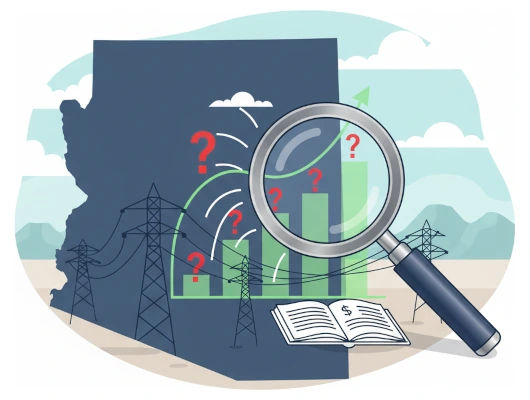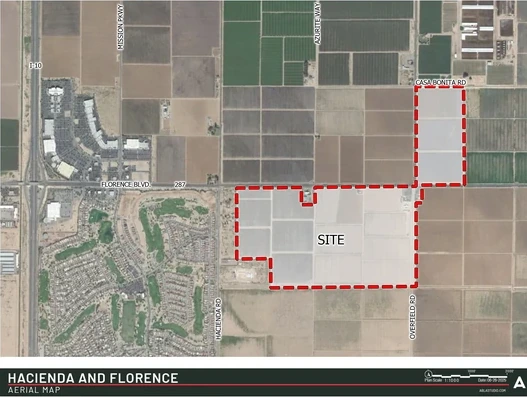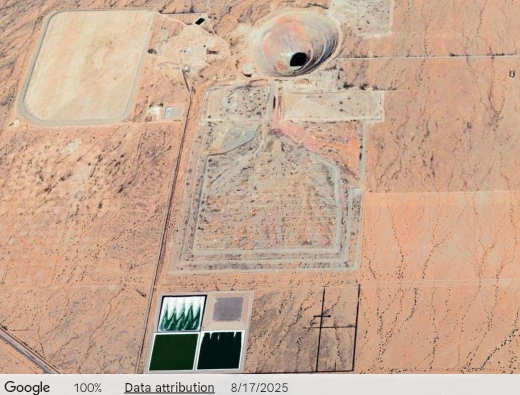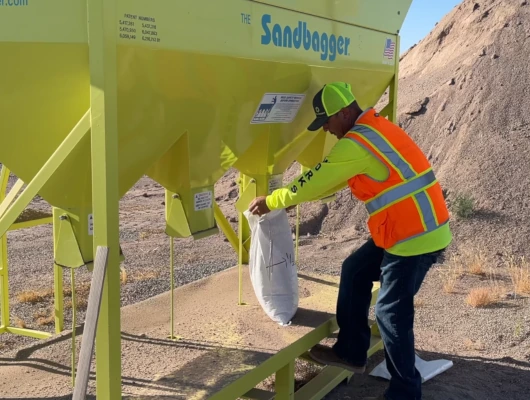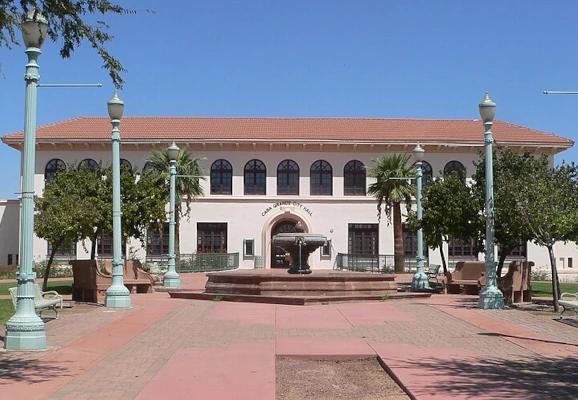Key Points
- Approval Granted: Pinal County Board of Supervisors voted 5-0 on August 6, 2025, to rezone 351.8 acres and apply a Planned Area Development overlay for Project Bella.
- Project Scope: Facility will include 480–520 MW natural gas generation via ten GE LM6000 turbines and a 400–440 MW battery energy storage system.
- Operational Role: Gas turbines will operate as a peaker plant during high demand; batteries will store excess grid energy for peak demand periods.
- Fire Safety Funding: Developer committed $2.3M in seed funding plus $250K annually (with 2.5% yearly increases) to expand fire services, contingent on separate Board approval.
- Community Protections: Includes a 200-foot landscape buffer with an 8-foot-tall berm extending about 68 feet wide, projected to increase noise levels by only 1.5 dB above background, and compliance with county noise limits.
- Water and Energy Infrastructure: Annual water use projected at 205–320 acre-feet, less than the approximately 466 acre-feet currently used for agricultural operations; natural gas supplied via existing El Paso pipeline.
- Economic Impact: Estimated $167M in tax revenue over 25 years; $4.1M community foundation fund; 14 permanent jobs with $2.2M annual payroll; hundreds of construction jobs.
- Local Power Sales: Developer in discussions with Electrical District 4 and SRP for local power purchase agreements, though grid distribution remains market-driven.
Board of Supervisors unanimously passes rezoning for 480-520MW natural gas plant and 400-440MW battery storage system within Casa Grande’s planning area
The Pinal County Board of Supervisors unanimously approved Project Bella on August 6, 2025, following the Planning Commission’s July recommendation for the 480-520-megawatt natural gas and 400-440-megawatt battery storage facility. The Board voted 5-0 to approve both the rezoning from General Rural to Industrial I-3 zoning and the Planned Area Development overlay for the 351.8-acre site located south of Selma Highway and north of Interstate 8.
Additional details about the project’s technical specifications, environmental impact, and community benefits can be found in our previous coverage of the Planning Commission’s review.
Project Overview and Energy Infrastructure Need
Project Bella addresses Arizona’s growing energy demands as coal plants retire and electricity consumption increases. The facility operates as a “peaker plant,” meaning the natural gas turbines will only run during periods when grid demand exceeds existing capacity, particularly during summer months when solar generation declines but air conditioning demand peaks.
“These turbines will only be utilized during those periods of peak demand,” explained Alex Hayes, attorney for developer Seguro Energy Partners. “You probably won’t even see them being utilized in the cooler months.”
The project combines two technologies: ten GE LM6000 natural gas turbines providing 480-520 megawatts of capacity and a 400-440-megawatt battery energy storage system. The batteries will store excess solar energy during the day and redeploy it during evening peak demand periods, a process called load shifting that helps integrate renewable energy sources.
Hayes noted the facility’s land efficiency compared to solar installations: “You think 160 acres and you get a little over 900 megawatts of capacity, you compare that to solar and you’re looking at 10X that amount of land.”
The project sits within Casa Grande’s planning area and aligns with the city’s industrial corridor goals for Interstate 8. Hayes told commissioners the area “will be anticipated to be annexed once the utilities become available.”
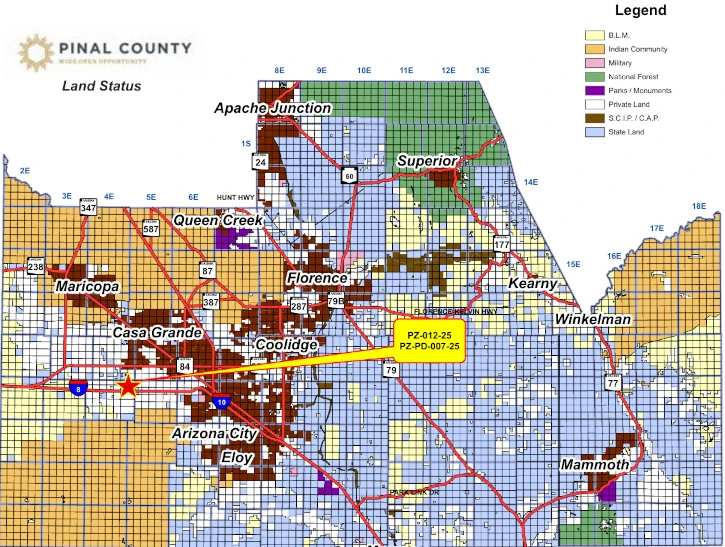
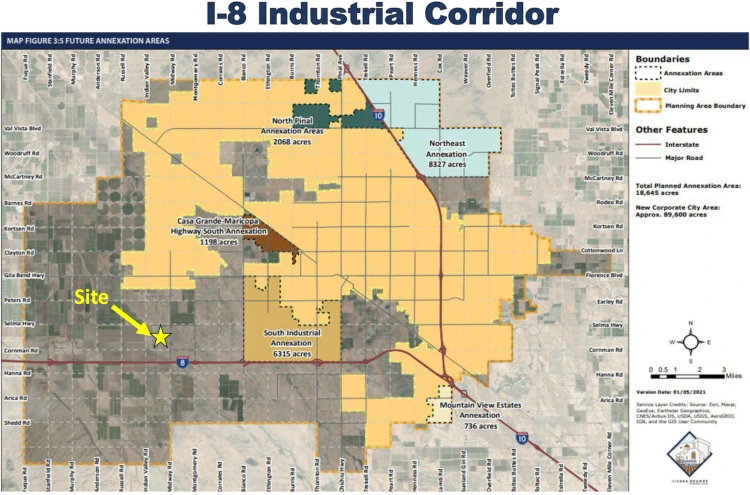
Development Location
Supervisor Jeff Serdy praised the project’s location, contrasting it with other energy developments: “I think everybody’s okay with these projects as long as they’re in the right area. This one’s in a good area that it doesn’t offend anybody. We’re getting bombarded with them in the wrong place. This is the right place.”
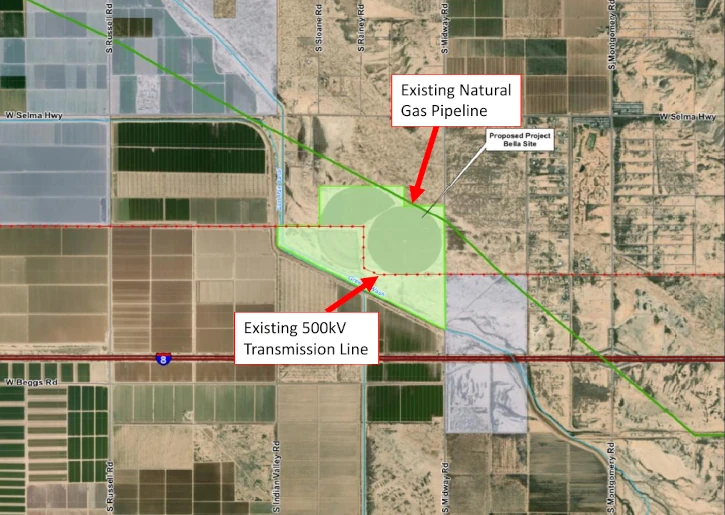
The applicant presented the following in their presentation to the board regarding relative distance to residential homes.
| Generating Station | Single Family Homes within 1000ft | Single Family Homes within 1 Mile |
|---|---|---|
| Proposed Project Bella Generators | 0 | 58 |
| Desert Basin Generating Station | 0 | 1183 |
| Sundance Power Plant | 1 | 36 |
| Coolidge Generation Station | 15 | 80 |
| Copper Crossing Solar Ranch | 225 | 479 |
| Kyrene Generating Station | 213 | 6517 |
| Santan Generating Station | 405 | 6357 |
Fire Safety Concerns Drive Extended Discussion
Fire safety dominated the public hearing, particularly regarding battery energy storage systems. Tena Dugan, a local resident whom Supervisor Rich Vitiello had appointed to the Transportation Advisory Committee earlier in the meeting, urged the Board to require fire protection before approving construction.
“When you’re putting in something like this that could create a safety hazard for those around it, fire protection should be number one on all of your minds,” Dugan said. “It’s not fair to those people that live around there.”
The project commits $2.3 million in seed funding to establish the Pinal County Fire and Medical Authority (PCFMA), an expansion of Arizona City Fire District, plus $250,000 annually for 20 years with annual increases of 2.5%. However, confusion arose about the exact nature of the agreement.
Chairman Stephen Miller asked: “Is it correct that we have a signed contract with the Arizona City fire people of any type of agreement?”
Hayes responded: “We have a signed commitment from our end to fund this, pending the approval of the fire and medical authority.”
The fire authority expansion requires separate Board approval. Hayes explained that Project Bella “wants fire service as well” for insurance purposes, adding “there really is not gonna be a circumstance under which we will commence operations without some kind of fire service.”
Miller noted the timeline alleviates immediate concerns: “During the course of construction, what is even the odds of anything really happening until it’s functional? And by the time it’s functional, you’ll have that in place.”
Sound Mitigation and Community Buffers
Supervisor Rich Vitiello pushed for enhanced visual screening, requesting a wall extension along the northwest perimeter rather than just the planned earthen berm.
“I don’t think people want to look at dirt berms when you’re gonna have a nice wall,” Vitiello said. “That nice beautiful wall would be super.”
Hayes said he could accommodate, noting the project already includes a 200-foot landscape buffer with an eight-foot-tall berm extending about 68 feet wide along the northern boundary adjacent to residential areas.
Sound modeling shows the facility will increase noise levels by only 1.5 decibels above existing background levels, which Hayes described as “barely perceptible to the human ear.” The project must comply with Pinal County’s noise ordinance limits of 60 decibels during the day and 55 decibels at night.
Water Usage and Pipeline Infrastructure
Vitiello questioned water consumption monitoring, given the project’s location in an area with domestic wells. Hayes explained the facility will use 205-320 acre-feet annually, compared to approximately 466 acre-feet currently used on average for agricultural operations on the site.
The pumping from this project and this property will not impact… well, actually improve the condition for the surrounding area,” Hayes said, noting that the reduced water consumption would benefit nearby wells and the local aquifer.
Vice Chairman Jeff McClure raised concerns about regional natural gas pipeline capacity. “The gas lines here are committed 100%,” McClure noted, explaining that new pipeline projects like one planned from the Permian Basin in Texas require utility commitments before construction can begin. However, Hayes confirmed that the existing El Paso Natural Gas pipeline crossing the property “already contracted for” Project Bella’s needs, eliminating dependence on new pipeline infrastructure.
Local Power Distribution
Vitiello pressed Hayes about keeping generated power within Pinal County rather than exporting it elsewhere. Hayes confirmed advanced discussions with Electrical District 4 and Salt River Project for power purchase agreements.
“You can expect that this power will be used locally,” Hayes assured Vitiello.
Chairman Miller noted the market-driven nature of electricity distribution: “Once they produce that power and they put it on the grid, no one knows where it goes. I can tell you Pinal County’s using more than their fair share of power.”
Aesthetics and Future Development
Supervisor Mike Goodman emphasized the importance of aesthetic design for future residential compatibility, citing a successful example in Gilbert where homes developed around an existing gas plant.
“I always come back to what happened in the town at Gilbert. We are on Ray and Val Vista. And I think it was SRP that built the gas plant there way before any homes were built around it. But the homes still came because of the aesthetics,” Goodman said. “Nobody wants to look out their back door or out their windows at a pig sty. That’s a big key here.”
Goodman stressed that thoughtful design creates value for surrounding property owners as development occurs, noting that aesthetic considerations help energy facilities coexist with future residential growth.
Union Support
Multiple union representatives spoke supporting the project’s job creation potential. A representative from Casa Grande representing multiple construction trades told the Board: “This project represents a major win for Pinal County, bringing hundreds of construction jobs to the region and creating real economic opportunity for local families.”
A Marine veteran and Laborers Union member described the project’s personal impact: “We’re able to do our job safely, effectively. Projects like this give us a local chance to work instead of having to drive to Flagstaff, Phoenix, wherever it may be.”
The facility will employ 14 full-time workers during operations with an estimated $2.2 million annual payroll, ranging from operations technicians earning $95,000 to a plant manager earning $175,000.
Financial Impact
Project Bella will generate an estimated $167 million in tax revenue over 25 years, averaging $6.7 million annually compared to the current agricultural use generating about $4,500 yearly.
The developers also committed $4.1 million over 10 years for a community foundation providing grants to residents within one mile of the facility for projects including energy efficiency improvements, landscaping, and well testing. Additional details about these community benefits and the project’s economic impact are available in our previous coverage.
With final county approvals secured, Project Bella moves to site plan review and construction preparation. The facility targets commercial operation by spring 2028 to provide capacity during the critical summer months when Pinal County’s electrical demand peaks.

